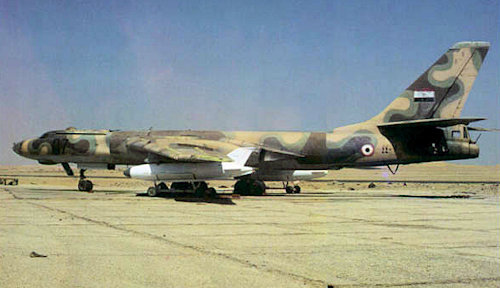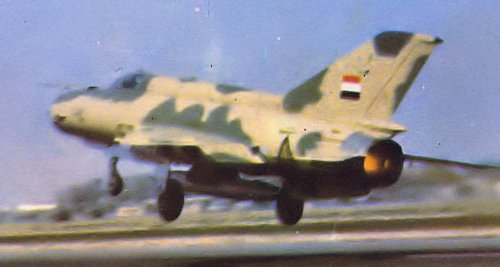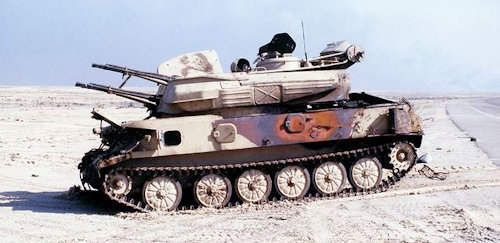The Middle Eastern area has always been at the center of numerous disputes. It still is with the various Iraqi, Syrian and Yemeni conflicts. Just to name a few .... It was, above all, during the twentieth century.
During this time, a war was fought which was destined to influence geopolitical and military developments for a long time. The reference is to the so-called "imposed war" in which Baathist Iraq, led by Saddam Hussein, and Shiite Iran, led by Ayatollah Khomeini after the victorious revolution that had dethroned the Shah, opposed each other.
The reason for the contention was primarily the possession and control of the vast and strategic waterway, where the Tigris and the Euphrates flow into the Persian Gulf.
That area, in Arabic called Shatt al Arab, is also traditionally rich in oil. It should not be surprising, however, that it has been the subject of controversy between Iraq and Iran since its inception.
Under the influence of Britain, the then Persian and Iraqi kingdoms had, in the 1937, signed a special treaty concerning the territorial division of the area, establishing that the major portion was to Iraq; but the deal was defeated by Iran a few years later, in 1969.
Taking advantage of the strong resurgence of the Shia and the weakness of the then newly-born Iraqi Baathist regime, Iran succeeded in allowing its Sunni counterpart to accept a new treaty in itself more favorable than setting the line of demarcation between the two states in the middle of the street of water.

It was 1975 when the new agreement was signed in Algiers (photo), Iraq was only a small coastal strip with the Umm Qasr harbor and the Al Faw peninsula as a direct outlet to the sea. Such a state of affairs was considered unacceptable by the new strong man in Baghdad, meanwhile, rising to power: Saddam Hussein.
Former senior President Hasan Al-Bakr, after having previously taken over the single Baath party, Saddam, in order to offset Iran 's military superiority in view of a possible military confrontation for the possession of Shatt al Arab, decided to sign a military service agreement with Moscow in 1972.
Along the lines of the agreement with the USSR, Saddam also came into contact with several Western European countries for the acquisition of modern military equipment. Thus it was that the Iraqi arsenal was also filled with French military vehicles (first of all) but also German and Italian. With these latest acquisitions, the Iraqis could deploy an army of 212 men on the border with Iran, with 2000 combat tanks and 1000 pieces of artillery, supported by at least 370 aircraft and 230 helicopters.
This huge war machine, placed under the command of the chief of staff, General Nizar Al-Khazraji, Saddam's loyalist, in the intentions of the Iraqi president, should have unleashed a short but devastating campaign to conquer the rich province of Khuzestan and thus definitively secure once and for all Shatt al Arab. Secondary diversion attacks would instead be organized to cut off some strategic rolling roads and get territorial pawns to use at the negotiating table.
 For the implementation of the plan above, the Iraqi Armed Forces were so arranged and organized.
For the implementation of the plan above, the Iraqi Armed Forces were so arranged and organized.
To the north, in the area of Soleimanyah, the armed body formed by the infantry divisions VII and XI was deployed, the latter being reinforced by the 113 brigade from the Third Army Corps and the IV Mechanized Division.
In the center, with a double defensive and offensive role, was the II Body. If this training was to protect the capital and its large connecting highway, on the other hand, in offensive terms, it would have to attack the Iranian industry of Qasre-Shirin-Ilam-Mehran, using the infantry and the units enclosed in its possession. For this purpose, the II body had three infantry divisions, 7 mechanized armaments and armored divisions IX and X, with full ranks, with 10 and about 600 T-62 wagons, plus BMP-1 and various supports such as SA-6 and SA-9 missile systems, more quadrupled ZSU-23 self-propelled 23 mm.
To complete the Iraqi terrestrial deployment there was finally the third body on which the main task of the Khuzestan conquest was. To fulfill such a tough task the great unit was deployed along a sector that Dezful knew to Abadan.
Part of this formation were the armored divisions III and XII, plus the powerful X armored independent brigade, with 100 Soviet-supplied T-72 tanks. At the armored divisions mentioned in the III body there were also several mechanized units. Concretely, these were the divisions I and V, to which were added two brigades of special forces and the XII independent armored brigade.
 The composition of the corrugated and mechanized divisions reflected perfectly the dictates of the Soviet organization. If the coated ones were structured on two wagon battalions, a mechanized brigade and a self-propelled artillery with supports, the mechanized ones were centered on a single brigade usually wrought by about 200 T-54 / 55 - and two of armored infantry BTR - 50 / 60. At these units, always in the mechanized divisions, were added a brigade of artillery and various supports.
The composition of the corrugated and mechanized divisions reflected perfectly the dictates of the Soviet organization. If the coated ones were structured on two wagon battalions, a mechanized brigade and a self-propelled artillery with supports, the mechanized ones were centered on a single brigade usually wrought by about 200 T-54 / 55 - and two of armored infantry BTR - 50 / 60. At these units, always in the mechanized divisions, were added a brigade of artillery and various supports.
As for the special forces brigades, usually structured on three battalions, the name should not be deceived! In Iraq, as in many Arab states nowadays (see celebrities Tiger Forces of the Syrian army employed in the ongoing civil war) are not commanding units but, more simply, line infantry units with better equipment and training.
Close air support was to be provided largely by the Air Force, even though there were no Air Force departments in the Army. Concretely, these were structured on a two-sted brigade brigade, the 1 ° and the 2 °, which in turn had eight rotating wing squadrons. Various types of helicopters were operating in the wards. From Mi-8 to Transportation, to Gazelle French armed reconnaissance, armed with rocket launchers and HOT missiles, to get to Alouette III multirole. Iraqis were also present in the Iraqi ranks Price in 17 samples assigned to the 4 ° Independent Assault Squadron and the more dated Westland Wessex Mk-52 as a function of assault helicopters.
A major role in rays' plans was also played by Air Force (in Arabic Al Quwwat al-Jawwiya al-Iraqiya) also largely made up of means coming from the Soviet Union and structured as follows.
 In the north, at Kirkuk, there was a flock of fighter bomber mounted on four squadrons equipped with Sukhoi 20 / 22 Fitter and MiG-21 MF. A fifth squadron, the 11 ° always based on MiG-21 MF, was based instead on the Firnas air base to protect the important city of Mosul. At Qayyarah, however, there was a new flock of interception and superiority area with departments equipped with Mig-23 MLA and the brand new, then, The Mirage, F-1EQ.
In the north, at Kirkuk, there was a flock of fighter bomber mounted on four squadrons equipped with Sukhoi 20 / 22 Fitter and MiG-21 MF. A fifth squadron, the 11 ° always based on MiG-21 MF, was based instead on the Firnas air base to protect the important city of Mosul. At Qayyarah, however, there was a new flock of interception and superiority area with departments equipped with Mig-23 MLA and the brand new, then, The Mirage, F-1EQ.
Tahmmouz's Al-Taqaddum air base was located in the bomber with the mastodontic Tu-22B / U and Tu-16 Badger birectors in different versions.
In addition to the two models quoted, the bomber bombers also deployed two squadrons equipped with the MiG-25 triceps Foxbat, in aerial superiority and strategic recognition.
At Rashid, or the main military airport in Baghdad, there was a hunting fever equipped with MiG-21 at the PFM and "bis" standards. Another department, of the same flock, had the version of the Fishbed optimized for dual-use interceptor / detector.
Leading the Iraqi aviation battle order, Al-Kut was a multi-stake flock belonging to a ward of old Sukhoi Su-7 Mk and another on MiG-23 BN fighter bomber.

There was another bombing storm in Nassiriyah's Tallil base, equipped with two squadrons of Flogger. Finally, at al-Widha / shoibiyah, there was a ward mounted on MiG-21 MF and another on SU-22M.
Tikrit and Baghdad, on the other hand, were the training line for the armed forces. In this case, Tikrit was the Aeronautical Academy and the basic, advanced and advanced training lines on seven flight groups. The supplied aircraft were the basic A.202 A trainers Bravo, Mi-2, Mi-4, and Helicopters Gazelle, plus the L-29 and Jet jets Prevost for the use of weapons. They also joined a couple of propeller PC-7.
Air transport was ensured by a special brigade and was based entirely on Rashid and Iraq's "Saddam" airport. It was structured in three groups mounted, respectively, on Il-76MD, An-12 and An-2. These were joined by the civil aircraft of the national airline "Iraq Airways", in particular the An-24.
 Finally, the Air Force deployment was completed by integrated air defense. This, at the outbreak of hostilities, could count on a large number of sites armed with Soviet SA-2 and SA-3 systems, as well as automatic cannons from 57 / 73 mm. On delivery - in the 1980 - there were also four missile batteries Roland-2 on trucks.
Finally, the Air Force deployment was completed by integrated air defense. This, at the outbreak of hostilities, could count on a large number of sites armed with Soviet SA-2 and SA-3 systems, as well as automatic cannons from 57 / 73 mm. On delivery - in the 1980 - there were also four missile batteries Roland-2 on trucks.
The Iraqi Navy was thinking of completing the Iraqi deployment. Decisively the least important in comparison to the other two armed forces, it had a very modest entity because of the small, controlled coastline of Iraq. Alongside a small frigate built in Yugoslavia in the 1978 there were some attack groups formed by former Soviet motomissilists, OSA class, three hunting rifles, twenty sailboats, five dragons and some class unloading units Północny. Like the Army, the Navy could count on an airline component. In this case, a department of helicopters navalized Super Frelon.
(photo: web)












